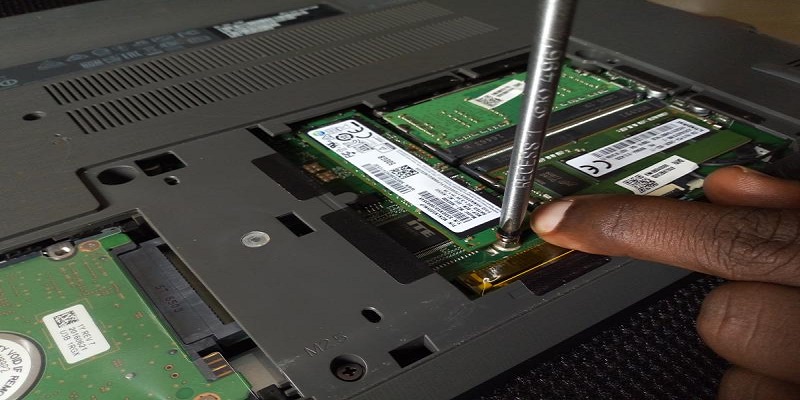SSDs, or solid-state drives, are a part of a computer storage medium. This persistent storage device employs solid-state flashing reminiscence to store non-volatile data. SSDs replace hard disks (HDDs) in systems and perform the majority of the functions of a hard drive. On the other hand, SSD’s are significantly faster. With an SSD, the device’s operating system will run faster, programs will load quickly, and files will save faster.
A conventional hard drive consists of a rotating disc and a text head coupled to a prosthetic arm called an actuator. Magnetic fields are used by HDDs to write and read data. However, the magnetic qualities can lead things to fail. To know more about it, reach out to Rousant system laptop services in Chennai.
How do SSDs function?
An SSD writes data to the silicon flash memory chips which are linked together. SSDs are created by arranging transistors in a grid in various ways to achieve different densities.
SSDs read data to a network of connected flash memory chips. To hold an electrical charge, these chips employ floating gate transistors (FGTs). This allows the SSD to save data even while it is not powered on. Each FGT has a single bit of data which is either 1 or 0 depending on whether the cell is charged or not.
Each piece of information can be accessed at the same rate. However, SSDs only can write to empty blocks. Even while SSDs contain methods to compensate for this, efficiency may still suffer over time.
SSDs’ primary memory types are mono, multi-, and tri cells. Single-level cells (SLC) can only hold one bit data at a time, either one or 0. SLCs are the quickest and most resilient type of SSD, but they seem to be the most expensive. MLCs can hold two bits of information per cell and can store more data in the same amount of storage as a single-level cell (SLC). MLCs, on the other hand, require more time to write to. Contact laptop chip level service to know how the SSD in your system works.
SSDs outperform HDDs because:
- Read and write more quickly- SSDs make it simple to access large files instantly.
- Faster boot times and improved performance- Because it does not have to boot up like a hard disk (HDD), it loads faster and better.
- Durability- SSDs may withstand vibrations and temperature faster than HDDs because they lack moving parts.
- Electricity use- SSDs require less electricity to operate than HDDs because they do not have moving parts.
- Quieter- SSDs produce less noise since they do not contain any moving or spinning elements.
- Size- SSDs vary in a variety of forms, whereas HDDs are only available in a few sizes.
